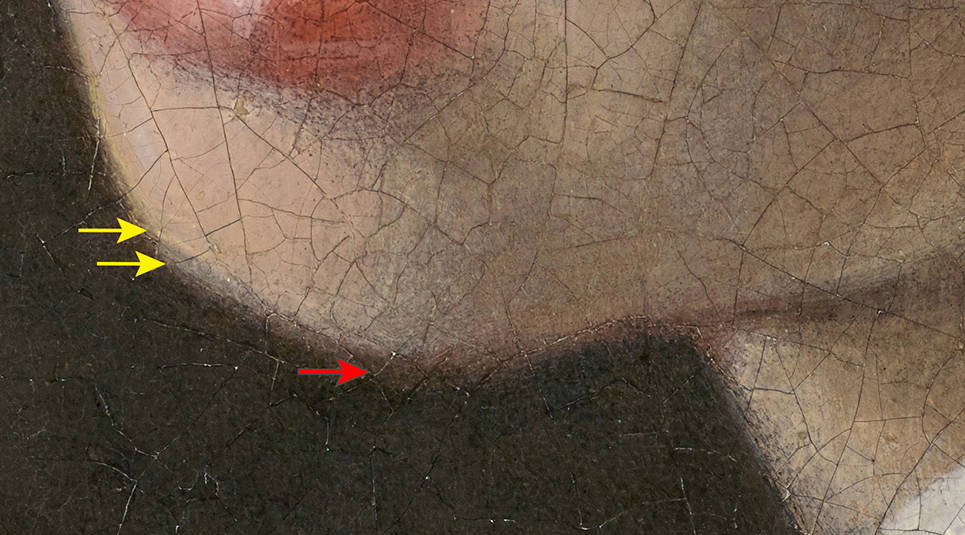Contouring
Vermeer avoided defining the outlines of the Girl with precise lines. He applied brown paint at an early stage, then left it visible as a contour line around her face. The paint layers of the background and the paint layer of her face do not touch each other.
The brown contour is made up of earth pigments that contain iron. Iron (the element Fe) can be detected using MA-XRF. The inverted MA-XRF map below shows the distribution of iron as dark areas. The contour around her face is indicated with arrows.
The MA-XRF map for iron also shows where Vermeer used earth pigments to build up the 3-dimensionality of her face. There is more iron in the shadow areas, around her eyes and on her cheek. It would seem that he laid in the light and dark regions at an early stage. In the 17th century, working up a painting in light and dark brown was known as ‘dead colouring’. It would allow Vermeer to see the fall of light and 3-dimensional effects in the composition before he applied any of the final colours. We are investigating how exactly Vermeer started to plan his composition, but this gives us a first glimpse.

